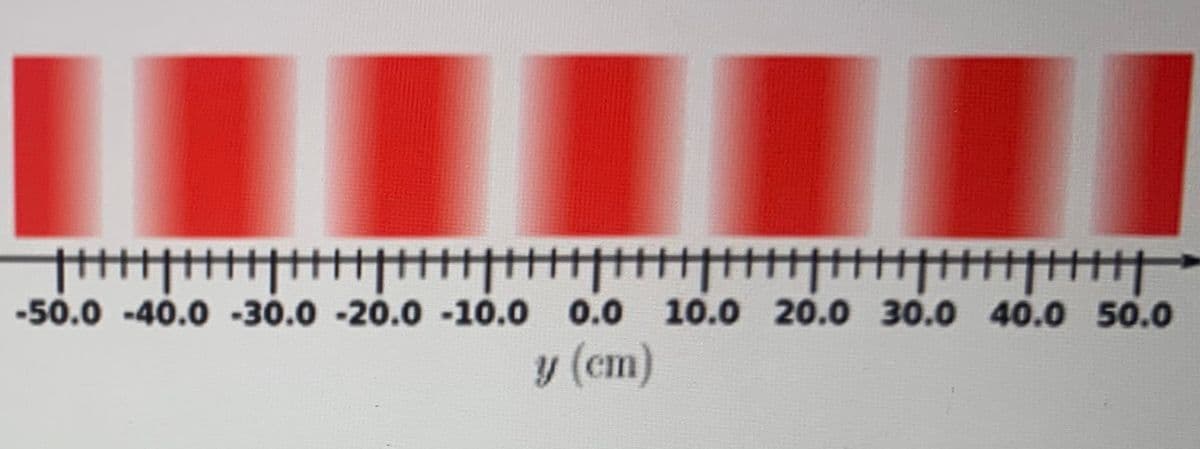A student performs a standard two-slit interference experiment and carefully sketches the observed interference pattern. The red colored pencil used by the student may not precisely match the actual color of the coherent light source. The position of the second-order maximum, corresponding to two full wavelengths of path difference from the two slits, is most nearly 35.0cm. The position of the third-order minimum of intensity, corresponding to two and one-half wavelengths of path difference for rays arriving from the two slits, is most nearly 43.8cm. 1. Given that the two narrow slits in the barrier are separated by 10.0μm10.0μm and the distance between the barrier and the screen is 2.55 m, what is the wavelength, in nanometers, of the coherent light source used to create the interference pattern? 2. The student wishes to repeat the using different sli
A student performs a standard two-slit interference experiment and carefully sketches the observed interference pattern. The red colored pencil used by the student may not precisely match the actual color of the coherent light source. The position of the second-order maximum, corresponding to two full wavelengths of path difference from the two slits, is most nearly 35.0cm. The position of the third-order minimum of intensity, corresponding to two and one-half wavelengths of path difference for rays arriving from the two slits, is most nearly 43.8cm.
1. Given that the two narrow slits in the barrier are separated by 10.0μm10.0μm and the distance between the barrier and the screen is 2.55 m, what is the wavelength, in nanometers, of the coherent light source used to create the interference pattern?
2. The student wishes to repeat the using different slit separations. What is the smallest slit separation, in micrometers, that produces a first-order maximum?
3. The student wishes to create a pattern that shows exactly 11 bright fringes to either side of the principal maximum. The screen can be made as wide as necessary, but the distance to the screen remains 2.55 m, and the wavelength is the same as calculated previously. What slit separation, in micrometers, would achieve this result?

Trending now
This is a popular solution!
Step by step
Solved in 2 steps with 2 images







